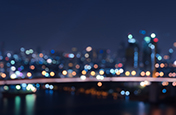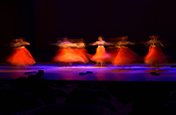Learn the best dog & cat photography tips.
Explore the process of capturing pet portraits and get advice from pro pet photographers, so you can help every dog (and cat) have its day.
Animal photography 101.
Pet owners love their animals. And that love fuels the exciting and potentially lucrative, pet photography business. Whether it’s a group shot of family members, including the cat or an animal portrait of a beloved dog, owners want pet photos that go beyond smartphone snaps. But taking great portrait photography has plenty of challenges, including how to get a pet to sit still and look at the camera. The short answer is practice, patience and creativity — and an abiding love of animals doesn’t hurt. With those skills and some advice from professional pet photographers in your back pocket, you’ll be a few steps closer to photo sessions that lead to your best pet shots yet.
Successfully working with furry friends.
While many aspects of portrait and headshot photography — like lighting, use of backdrops and some basic camera settings — apply to pet photography sessions, the biggest difference is of course the subjects you’re working with.
Find ways to gain experience with animals.
“When I’m working with trainers, they don’t have to worry that I’m going to freak out the animals,” explains Carli Davidson, the author of the dog photography books Shake and Shake Puppies, about her years working in zoos. “Having that background set me up to be a stronger animal photographer because I know how to direct my models in a way that many people don’t.” Acquiring years of zoo experience might not be viable for every aspiring pet photographer, but building rapport with the animals being photographed is a process you can practise on your own pets or by politely asking dog owners at your local coffee shop.
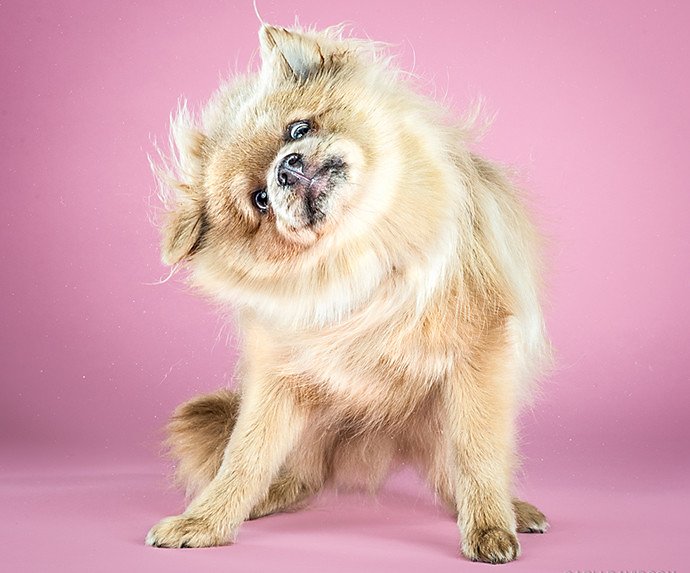
Images by Carli Davidson
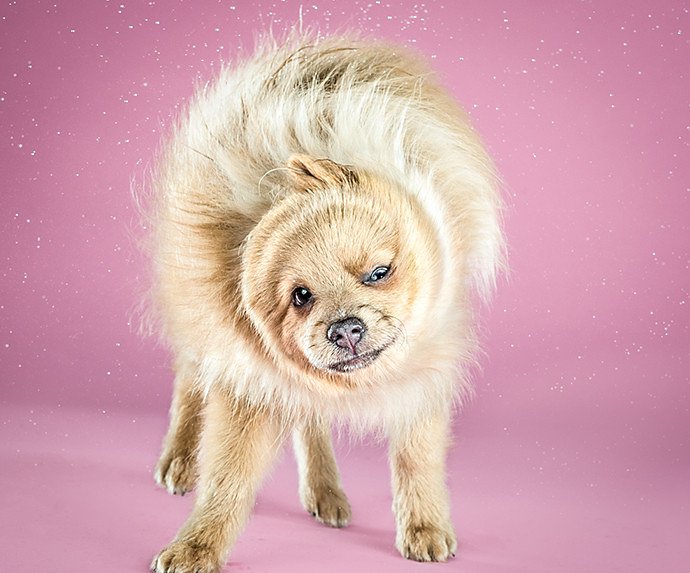
Get to know your subjects.
Studying animal behaviour and learning how each pet reacts to a new environment can help you on a shoot and your observation skills in the moment will be invaluable. Professional photographer Robyn Arouty supplements her decade of photography experience by building empathetic connections with her subjects. “When the dogs arrive and they’re roaming around smelling all the smells, you begin to see certain traits,” Arouty explains. “Do they like toys? Do they like treats? What motivates them?”
Be ready to adapt during a photo shoot.
Animals react to stimuli, but each cat or dog is unique. Certain subjects will respond to things that others won’t and none of them will respond the same way every time. “You can make a type of sound only once or twice,” Arouty says. “Whether it’s a noise from your mouth, your throat or it’s coming from a squeaky toy, by the third time that noise is going to become extinct.” Davidson expands on how noise helps with animals: “Learn how to make really weird noises and don’t be shy — you usually get only a few reactions per sound.” It’s all about facilitating interaction and getting the animal’s attention. “I tell clients to give the dogs only half their breakfast before bringing them,” Davidson says, “so they’re a little more food motivated.”
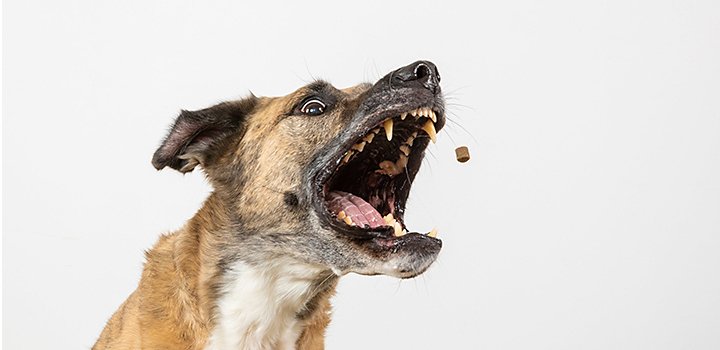
Image by Robyn Arouty
Create a comfortable atmosphere.
As with human subjects, the more at ease an animal feels, the better your chances are at getting a great shot. A dog portrait might be easier to achieve, for example, because “they’ve jumped in a car with you and not ended up at the vet before.” Davidson explains. “Cats live in our houses and go in the car only when someone is going to jab them with needles. So they tend to be way more distrustful — which is logical. Getting cats comfortable on a shoot is a much longer protocol.” Practice patience and give your subject time. You should be able to get some quality photos, but don’t push it. Not all animals respond well to the experience and stressing out a pet isn’t going to ingratiate you to your subject or its owners.
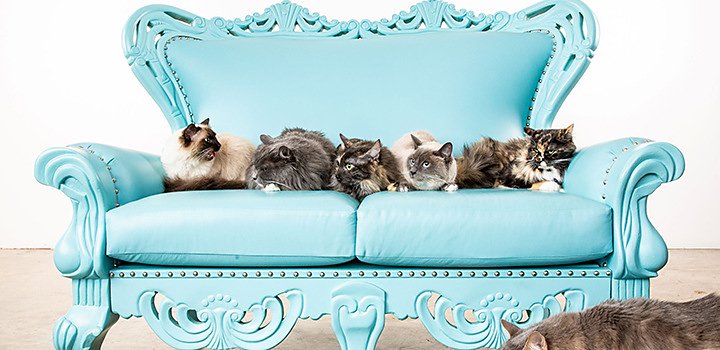
Image by Robyn Arouty
More technical pet photography tips.
Here are a few more things to consider when using animals as the subject matter of your photos.
Use a fast shutter speed.
“Dogs are frenetic — they’re always going to be moving around,” Davidson explains. “So, knowing your equipment really well is crucial.” It’s unlikely pets will ever sit as still as human subjects for a portrait, so you almost have to treat sessions with animals as though you’re capturing action shots. By using a faster shutter speed you’ll be able to freeze motion better to get quality shots before the dog, cat or any other animal needs to scratch, stretch or take a lap.
Understand your lighting.
How lighting affects a portrait — or any photo — is a variable all photographers must deal with, but when photographing animals of differing fur colours, it can get more complicated. Fur absorbs light differently than human skin. “Shooting in low light with a dark-coloured dog can be a total nightmare, so consider the time of day, amount of shade and your location,” Davidson suggests. If you opt to use a strobe flash instead of natural light, you need to consider your subject’s potential reaction. “We’ve had a lot of dogs with PTSD from Hurricane Harvey come in,” Arouty explains. “The flash of light is very frightening for a lot of dogs.”
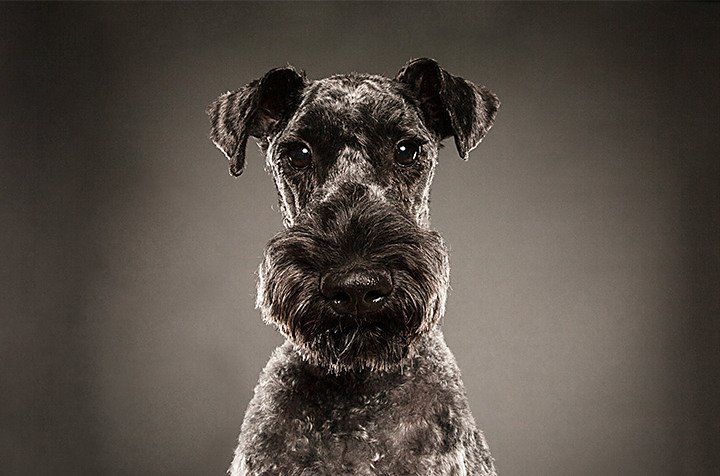
Image by Robyn Arouty
Adjusting your shots in post-processing.
Editing your work can help you to pop different elements of your pet photos — especially in instances where you are getting shots of a person with light skin next to a dog with dark fur. Using a process akin to whitening teeth in photos, you can create adjustment layers that will allow you to, for example, brighten a dog’s eyes against black fur. You can also edit to remove unwanted elements from a photo, like drool or fur left on a chair. “One of the biggest things that we use Photoshop for is to remove leashes,” Arouty explains. “We need to keep the dog in one place and they need to know it’s not playtime. So we use a slip lead and Photoshop it out — or my assistant’s hand holding a treat in front of the lens.”
Pet photography requires you to adapt to many conditions. From learning animal behaviour to tackling new lighting challenges, mastering the circumstances and subjects of pet portraits takes time. Practice patience and put in the work and you’ll be on your way to high-quality animal images. Next, you might be ready to try your hand at capturing shots of animals outside the studio — explore these tips for photographing animals in the wild and other nature photography.
Contributors
Do more with Adobe Photoshop Lightroom.
Edit photos easily with Lightroom presets, Super Resolution, easily share photos from any device and access your projects anywhere with cloud photo storage management.
You might also be interested in…
How to add bokeh backgrounds to your photographs.
Learn more about the beautiful blur effect that can give your photos a striking look.
Journey to a new world and make small subjects larger than life with macro photography tips.
Discover how adjusting shutter speed can help you capture clean shots or motion-filled moments.
Discover ways to select the ideal focal length for any and every photo.
